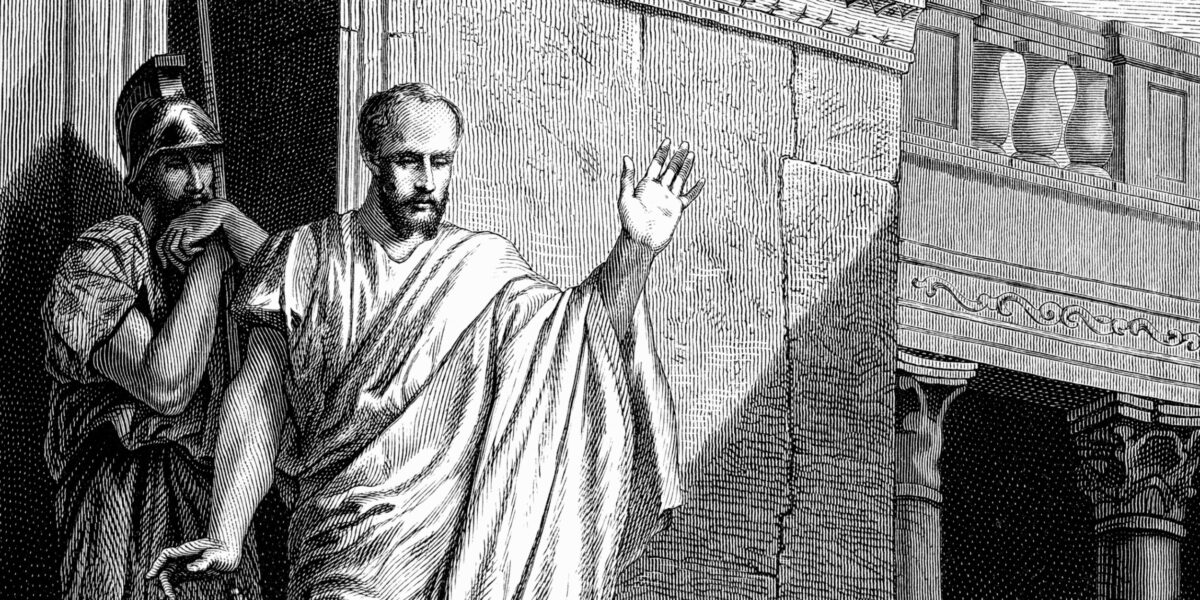Who ordered Jesus’ death? Why did he do it? Read more about Pontius Pilate’s life and legacy to find out.
Pontius Pilate was governor (prefect) of Judea from A.D. 26 to 36, during the time that Tiberius was the Roman emperor (A.D. 14–37), and Herod Antipas was governor (tetrarch) of Galilee (4 B.C. to A.D. 39). Pilate is mentioned by Roman, Jewish, and Christian writers. The Roman historian Tacitus tells in his Annals that Jesus was put to death by Pilate during the reign of Tiberius. Philo, a Jewish scholar from Alexandria, wrote that Pilate angered the Jews in Jerusalem by displaying metal shields at the governor’s palace that bore the image and name of the emperor as though he were a god. The Jewish historian Josephus tells about the public outcry Pilate caused when he brought standards (images carried on poles) into Jerusalem picturing the emperor as a god, and when he took funds from the temple treasury to pay for an aqueduct to bring water into Jerusalem.
In the New Testament, Pilate is mentioned several times (Acts 3:13; 4:27; 13:28; and 1 Timothy 6:13), but he is most important in the Gospel accounts of Jesus’ trial and execution. The oldest of these stories (Mark 15:1-15) says that when Pilate asked Jesus if he claimed to be king of the Jews, Jesus answered only, “Those are your words.” Pilate saw no reason to put Jesus to death and was also warned by his wife not to do so (Matt 27:1-26). But when the crowd demanded that Jesus be crucified, Pilate gave in to their demands and ordered Jesus’ death. Pilate washed his hands in public to show he did not intend to take the blame for Jesus’ death. Luke brings Herod Antipas into the story as the one who advises Pilate not to put Jesus to death. Yet in each of the Gospel accounts, Pilate gave in to the demands of the crowd (Luke 23:1-25).
Matthew was written at a time of growing conflict and competition between the young Christian church and some of the Jewish leaders. So Matthew seems to put the blame for Jesus’ death on the Jews and their leaders. If Jesus had been put to death for breaking the Jewish law, his execution under Jewish authority would have been done by crushing him to death with stones. This was the form of punishment commanded in the Law of Moses and that was later used to kill the church’s “first martyr,” Stephen (Acts 7:54-60; Deut 13:9-10; 21:18-20). But Pilate had Jesus put to death by crucifixion, the Roman method of execution. And the sign he had put over Jesus’ cross said that Jesus wanted to be the political ruler of the Jews (Luke 23:38).




